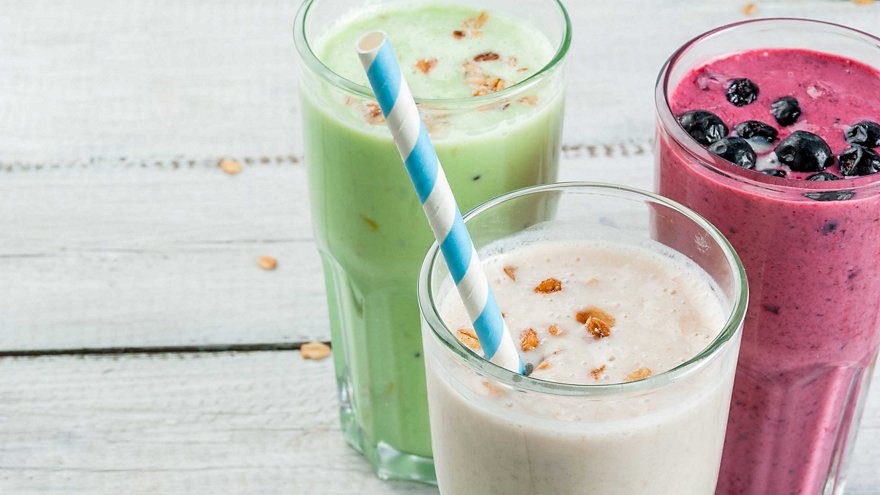Stay on top of consumer trends
Stay on top of consumer trends
Current consumer trends and UHT technology – a perfect match? Absolutely.
The consumer landscape has changed rapidly, and key market trends have been accelerated and re-prioritized by the pandemic. Consumer behaviour and purchase patterns are constantly changing, and the food and beverage industry needs to be agile enough to reach a more enlightened consumer, innovate with ever-evolving technology and address real challenges such as health and food safety. So which trends currently present the biggest possibilities and challenges? Here, we take a look at three of them, and what they can and do mean for manufacturers of UHT products.

The Health and Well-being trend
These days, you don’t have to be a health fanatic to enjoy an active lifestyle. Fitness has become mainstream. As a consequence, consumers look to natural and high-protein food such as milk to support their active lives. For example, 37% of UK consumers agree that drinking milk after exercise is a good way to help muscles recover. But there’s more to well-being than just staying fit. A more holistic approach to health is emerging, with people aligning to the changing rhythms of their bodies and proactively searching for healthier products. This has resulted in a demand for “Better for You” food and drinks, such as protein- and vitamin-enriched milk, protein shakes and sports drinks.
Consumers often use lactose-free products for digestive support. In fact, digestive health is one of the main drivers for people switching from dairy milk, and this propels the growth of lactose-free milk. As an example, in Turkey sales of lactose-free milk grew with 55% between 2019 and 2020. We’ve seen the demand for plant-based alternatives continue to grow and the nutritional value of these products increase. There have been considerable developments in fortifying plant-milks for increased nutritional value. Tetra Pak’s processing technology and experts can fully support production of plant-based beverages and lactose-free milk.
The well-being trend also influences a growing demand for products without added sugar. Too much sugar – that’s the number one concern regarding children’s diets for parents in the UK. But even if consumers want less sugar, they often prefer not to compromise on that sweet taste. There is a preference for products using natural options like plant-derived sweeteners, fruit and fibres to lessen sugar content. Lactose-free products are naturally sweeter in taste than standard plain milk, so consumers can enjoy a lighter, sweeter and tastier milk without added ingredients. For producers of UHT products, this is a golden opportunity. It may be a very good idea to explore new recipes, and the fact that indirect UHT milk per default has a sweeter taste presents a natural advantage. Furthermore, our UHT technology specialists can help create a more flexible production environment, allowing producers to easily switch between different products and smaller-batch production runs – which enables exploration of the business potential in various health-promoting options.

The food safety trend
The Covid-19 pandemic has placed the spotlight on food safety. Fears around food safety and food security have risen significantly and consumers are balancing these concerns with worries about the environment, highlighting the dilemma the industry is faced with: to provide provide health and food safety, while also caring for the planet. Data shows us that,
- Food safety is rated as an equal concern as Covid-19,
- That health and hygiene are connected to food safety, and
- Being healthy is being safe.
With hygiene and sanitation at the top of the consumer mind, UHT treatment resonates very well with the food safety trend. Ultra high temperature kills harmful bacteria through an enclosed, hygienic process resulting in little risk of contamination.
And despite its long shelf life, the product does not require additives or preservatives, and the packaging keeps products safe, hygienic and traceable. UHT milk provides a safe, healthy and convenient way to access the nutritional benefits of milk.
In light of the pandemic, Tetra Pak recently launched an information campaign, “Long life Milk for Lifelong Goodness”, on UHT milk in Greater Middle East & Africa. Various videos provide answers to the most common questions and concerns, and tells the story of how the dairy milk gets from farm to table – and how aseptic packaging keeps the product safe and delicious without preservatives. Another initiative is the ‘Shelf Stable Milk for Schools’. This campaign was launched in the US and aims to inform school decision-makers about the benefits of choosing school milk in aseptic packaging.
The ‘new experiences’ trend
Young consumers are on the lookout. They are eager to try new experiences for the palate and explore new flavours, beyond strawberry, chocolate and vanilla. Texture also plays a key role in offering new adventures for curious taste buds, and novelties can encourage them to share their experiences in person or online. This provides brands with new possibilities to engage with their audience.
Sophisticated flavours, based on provenance and use of premium ingredients, are another exciting niche. We already mentioned that sugar is a concern to many consumers, so we see more grown-up, less sweet flavours emerging. For example, botanical ingredients and minerals are being explored as they can bring health benefits, exciting new textures and sophisticated flavour profiles to the category.
There is an interest in products that blend dairy ingredients with plant-based milk, which opens up new possibilities for UHT producers. And as stated above, a flexible UHT production environment makes it comparatively easy to explore new niche products – in a profitable way.

FACTS
What is a trend?
A tangible expression of change, driven by consumers’ wishes and desires. A trend often changes or evolves and creates new behaviours over the years.
A trend can be originated by a change in macro-drivers, which are the big forces that change society, such as legislation, demographic change, environmental or geographic factors.
Trends tend to be linked to each other. Sometimes we see a tension between trends, that can be an opportunity to create a new product for consumers that can be linked to several product trends.
Sources:
Nilsen data (Turkey lactose-free milk figures)
Tetra Pak Index 2020
Trendipedia
- Clean-label yoghurt: what you need to know 25/11/2020
- Tetra Pak research study reveals food safety-environment dilemma fostered by COVID-19 pandemic 17/11/2020
- Alfa Laval SRU Pump – a proven curd transfer solution 30/06/2021
- GlaxoSmithKline tanks clean profit 25/11/2020
- Alfa Laval LKH pumps reduce energy costs, downtime and emissions 25/11/2020
- Tetra Pak accelerates action towards reduced littering and sustainable future 29/03/2021



